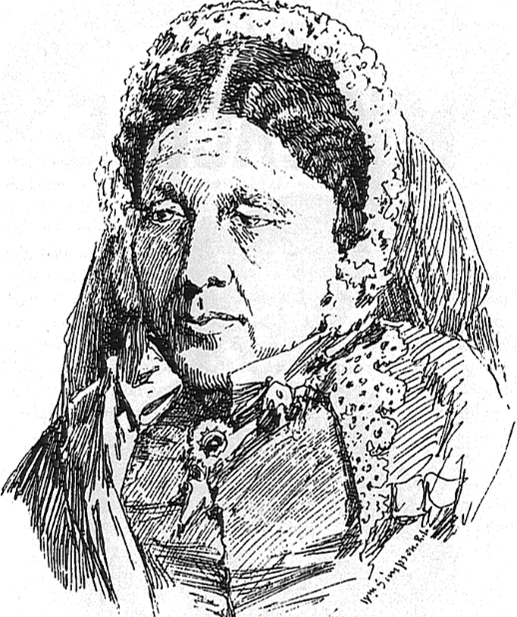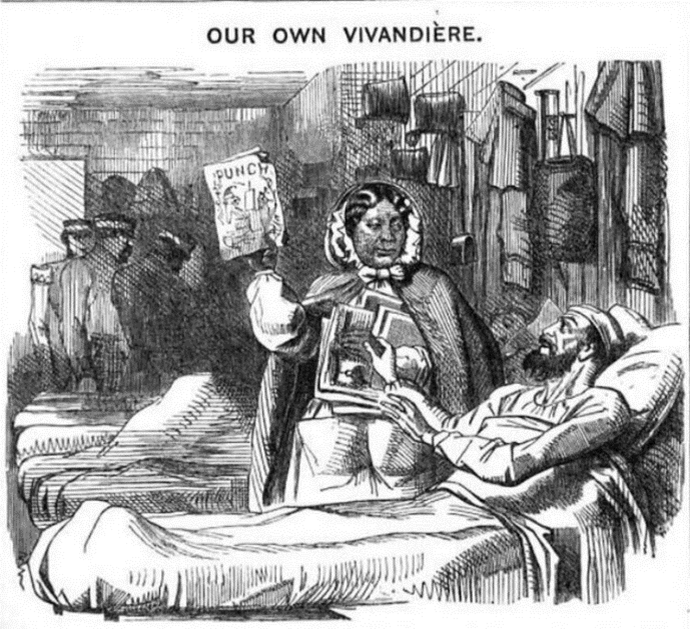In October, as part of Black History Month in the UK, we ran a competition asking students to submit blog posts showcasing the contribution of scientists of African and Caribbean descent to the scientific world. In the run-up to February’s Black History Month in North America, we are delighted to share the winning blog by Cerys Francis-Garside, Stage 1 Master of Dietetics student.
Mary Seacole: A Scientist by Nature
Perhaps on first hearing her name, you would not choose to label her a scientist. Perhaps you might think “Oh I’ve heard of her… who is she again?”. To me, the story of Mary Seacole is one of the most important in science as it is one we can continue to learn from again and again.
When I was about 8 years old I was given an assignment to complete about Florence Nightingale, the Lady with the Lamp. It is true that the effect that Nightingale had on modern nursing could not go unrecognised, particularly her work in sanitation. In fact, to this day we still recognise her importance by naming conference centres-turned-hospitals “Nightingales”. Furthermore, I do not wish to make it a habit to bring one woman down in order to build another up, but in this case, there is more to the story than my primary school curriculum covered.
Mary Jane Seacole
In Victorian England, a biracial black woman enters the scene. Half Scottish, half Jamaican; a time of desperation would be required to allow Seacole to fulfil her aim for which she travelled across the world. I would have thought that the Crimean War would have been enough, but perhaps unsurprisingly, Seacole was turned away. Although historians can only speculate, it was not so cut and dry as solely being an issue of skin colour; in contrary to popular assumption, black people did live in Victorian London. Seacole was turned away for having received no British Nursing training and it is here that I would like to draw the first parallel to the 21st century, as this distinction did not mean that Seacole was unqualified.

In Jamaica, her mother – a free woman – had taught her an invaluable trade. Like many doctresses in the West Indies, she had excellent knowledge of diseases, herbal remedies, midwifery, and nursing; much of which had been learnt whilst nursing the injuries of fellow slaves. Importantly, in Seacole’s own autobiography, she stated how in the late 1700s these Jamaican doctresses were already practicing a high standard of hygiene.
Seacole’s father was a lieutenant in the British Army, and this link made it possible for her to spend time observing military doctors healing soldiers recovering from prevalent diseases at the time. A reflection of biracial privilege perhaps? The military had a large presence in the West Indies at the time, and a lack of preparation for tropical diseases led them to Seacole’s door. She was also on the front lines of the cholera epidemic in 1850s Jamaica, and again in Panama in 1851, where she successfully treated the first person to fall ill from the disease. So here we have a highly qualified, educated, empathetic nurse, but a widowed woman, yes “only a little brown” [1] by her own admission, and not British by training.
In case I have focused too much on the side of her empathy, in writing this piece I have made the claim that Seacole was a scientist. During the Panama cholera outbreak, Seacole personally performed autopsies; studying, hypothesising and drawing conclusions from each patient she treated. She completed minor surgeries and avoided the use of opiates and lead(II) acetate (now known to be toxic), instead proposing alternative remedies in their place with mixed success which she would later reflect on. I hope this is enough to convince you.
The Start of the Crimean War
With decades of experience under her belt, the Crimean war began. Hundreds of soldiers were dying from cholera, many in cramped, unsanitary hospitals. As previously mentioned, Seacole was laughed away from joining the nurses going to Crimea. It is hard to imagine that the colour of her skin played no part in this, as the death rate of soldiers soared from a variety of complications.
As each route Seacole attempted to take to Crimea was blocked by prejudice of some description, we find ourselves back with Florence Nightingale. I would not be able to explain Nightingale’s issues with Seacole better than she did herself:
“I had the greatest difficulty in repelling Mrs Seacole’s advances, and in preventing association between her and my nurses (absolutely out of the question!)… Anyone who employs Mrs Seacole will introduce much kindness – also much drunkenness and improper conduct” [2]
Again, we can only speculate the truth behind her opinion. Nightingale would go on to express gratitude and fond views of Seacole, despite wishing her nurses had no association with her. Eventually, Seacole found passage to the front line, and nursed many soldiers with her knowledge of disease, military injury, nutrition, and empathy.

Her Legacy
The life of Mary Seacole is one that continues to divide. After her death, she was forgotten for a century. Historians can claim that she only served “tea and lemonade” [3], or that she merely comforted those as they passed away, but I find her legacy far greater.
One American soldier described her as “so many shades removed from being entirely black” [1], which does not only read as an indication of her skin tone, but also a slight to characteristic perceptions of black people. Regarding the issue of colourism, it is likely that Seacole was seen as more acceptable. To this day, mixed race and light-skinned black people continue to be seen as the “moderate” choice in a world where diversity is foremost a buzzword.
Mary Seacole’s experience as a single biracial woman will always be relevant during this current time. Whatever it is that you draw from her story, I hope you do infer something. We are scientists, after all.
Interested in reading more about Mary Seacole? Check out the following sources cited in this blog!
- Seacole M. Wonderful Adventures of Mrs Seacole in Many Lands: Edited by W. J. S With an Introductory Preface by W. H. Russell. Cambridge: Cambridge University Press. 1857.
- Chang T-F. Creolizing the White Woman’s Burden: Mary Seacole Playing ‘Mother’ at the Colonial Crossroads between Panama and Crimea. College literature. 2017;44:527-557.
- McDonald L. Mary Seacole: The Making of the Myth. Toronto: Iguana Books. 2014.

